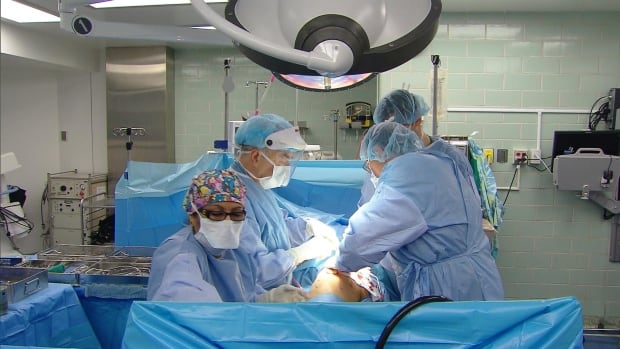The disease, often associated with World War I trenches and sometimes found in refugee camps, has been detected in several organ transplant recipients in Alberta.
Bartonella quintana, an infection caused by body lice, has been found in seven organ transplant recipients in Alberta since 2022, said Dr. Dima Kabbani, a transplant infectious disease doctor who treated the patients.
“That was very concerning to us, especially knowing that this bacterium can cause more severe types of infections that affect the heart valves and This is because it can affect some of your organs,” Cavani said.
“We were surprised to see such an outbreak in Alberta.”
The disease, which manifests as skin lesions, was passed from donor to donor, all of whom were homeless and infected themselves.
“This shows that this bacteria is indeed present around unhoused people, so it speaks to a larger public health problem,” Cavani said.
“If these people had access to just water to wash their clothes or take a shower, we wouldn't be seeing these types of infections among unhoused people in Alberta.”
Cavani said he alerted Health Canada, which told CBC News it would not be able to respond by deadline. Qabbani recently wrote American Journal of Transplantation article as a way to alert other transplant programs across Canada and around the world.
As for the patients, Cavani said all seven were treated with antibiotics and have recovered.
Alberta health officials say seven people have been infected with Bartonella Quintana, also known as “trench fever,” since 2022, all of whom have received organ transplants and experienced homelessness. That's what it means. Experts are now testing unhoused donors and recipients to stop the spread of infection.
Dr. Karl Budman, an infectious disease physician and microbiologist, I wrote a review article on open forum infectious diseases. Regarding the Alberta case, he said the disease doesn't often show up in the transplant setting.
“This is something new…this has never really been described before, or if it has been described, very rarely,” he said.
However, he stressed that organ transplants are extremely important for patients.
“We do not intend to limit organ transplants because of these cases. Organ transplants are lifesaving for many people,” he said.
“What we want is for donors with risk factors for Bartonella quintana to be recognized early so that people can know that the recipient may be at increased risk. .”
the organization is not surprised
News of the situation comes as no surprise to Marlis Taylor, a certified nurse and director of Edmonton's harm reduction program StreetWorks.
“Having less shower space available or access to clean clothing can make it very difficult to maintain any form of hygiene,” she says.

Washrooms and showers at Edmonton's sanitation hub were closed at the end of August.
“This is a loss of another resource that people would use to maintain their own cleanliness,” Taylor says.
Tricia Smith, executive director of Radius Community Health and Healing in Edmonton, said body lice have been found among homeless people.
“Until there's a real concerted effort, a consistent effort at the population level, we're going to continue to see that,” she said.
New AHS guidelines
Alberta Health Services did not make anyone available for an interview.
AHS said in a statement to CBC News that its donation and transplant programs prioritize the safety and well-being of both donors and recipients.
“The new guidelines now ensure that both unaccommodated donors and their recipients are tested 3, 6, and 12 months after transplantation,” the statement reads.
Cavani said he believed this scenario could become more common in the future.
“We have a drug overdose problem in North America, and more and more donors are dying of overdose, and these people are addicted, sometimes unhoused, sometimes without stable housing, so the mortality rate is lower. It's even higher. There's a risk of infection,” she said.


